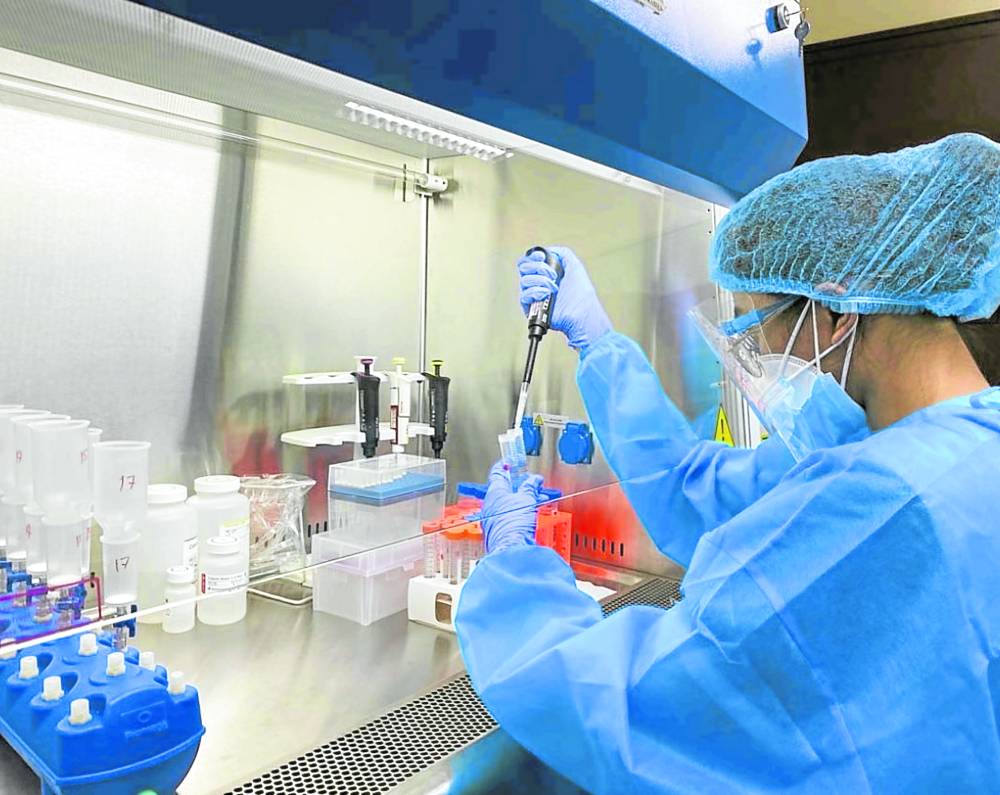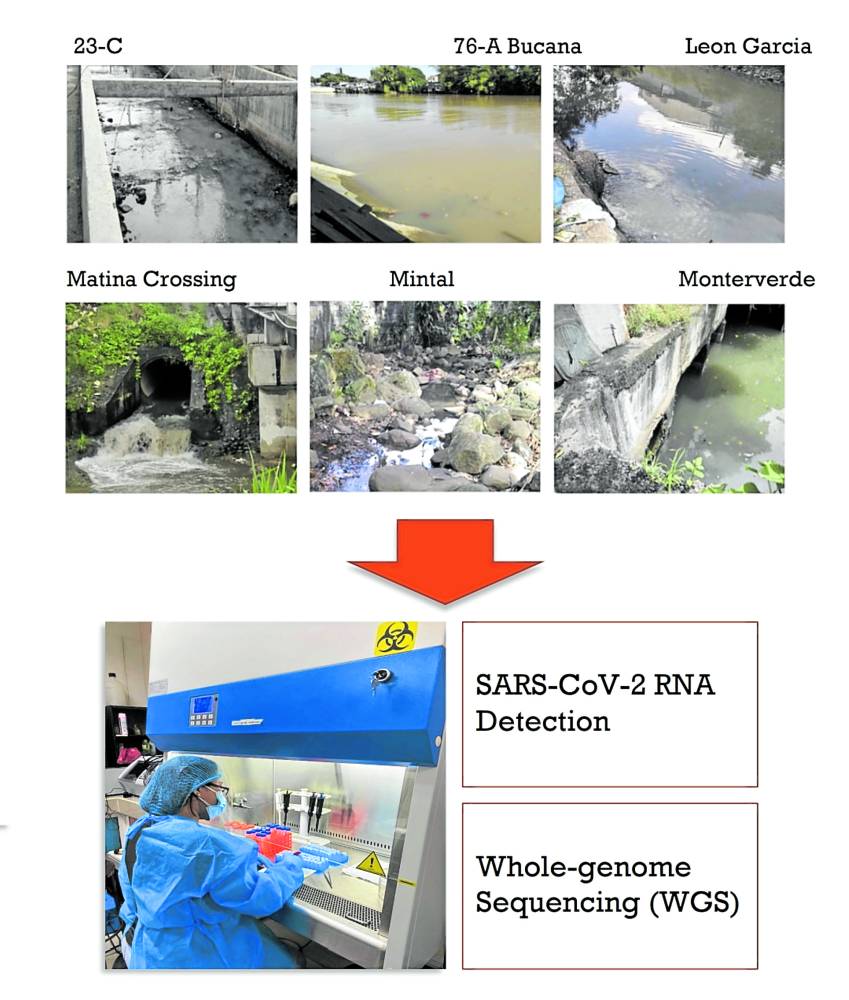Wastewater tests pushed as COVID monitoring tool

SUITABLE FOR LOCAL GOV’TS Scientists from the University of the Philippines Marine Science Institute have found traces of SARS-CoV 2 RNA in wastewater sampled from six barangays in Davao City. They believe wastewater-based epidemiology can be a useful public health tool for monitoring COVID-19 infections.
—Contributed photos
Traces of SARS-CoV-2 RNA, the virus that causes COVID-19, were found in community wastewaters in Davao City even when no new cases were reported during the week of discovery, according to a team of scientists from the University of the Philippines (UP).
On Thursday, scientists from the University of the Philippines’ Marine Science Institute (UP MSI) and UP Mindanao presented the findings of their pilot study that tested samples of wastewater from six community sewage pipes in Davao City for traces of SARS-Cov-2.
The study hoped to assess how wastewater-based epidemiology (WBE) or the practice of linking pathogens found in wastewater to population-level health, can be useful as a public health surveillance tool especially in highly urbanized cities with no centralized wastewater management systems, such as Davao.
The scientists argued for the need for WBE to capture unreported cases in barangays.
Other countries, such as the Netherlands and the United States have shown that WBE can detect and predict hot spots of Covid-19 infections earlier than clinical surveillance methods, like the use of reverse transcription-polymerase chain reaction (RT-PCR) tests.
Using WBE “could help local governments in forecasting what barangays may need interventions or are developing risks, rather than a blanket shutdown (for all),” said UP MSI scientist Dr. Caroline Jaraula.
Positive samples
For their study, the team led by Maria Catherine Otero collected samples from Barangays 23-C, 76-A Bucana, Matina Crossing and Leon Garcia Sr. and creeks in Mintal and Tomas Monteverde every week between 8 a.m. to 3 p.m. from Nov. 8, 2020 to Dec. 12, 2020.
These barangays were identified by Davao City’s epidemiology office as areas with high or moderate risk of Covid-19 transmissions.
They then tested the samples for coliforms as well as viral RNA through whole-genome sequencing.
Among others, they found that 22 out of the 24 samples obtained from the communities tested positive for SARS-CoV-2.
They measured these against clinical surveillance data during the study, and found that SARS-CoV-2 was detected in the sample communities regardless of their transmission risk category or the presence or absence of reported cases.
The scientists believe that the viral RNA could have come from presymptomatic, asymptomatic cases or symptomatic cases who did not self-report to their local health monitoring unit.
Based on existing literature so far, Otero believes that the detection of viral RNA in wastewater poses no danger to the population as these are already “dead” and are no longer infectious.
“The general danger is not so much of an issue but it’s more of the application of Covid-19 surveillance in terms of directing public health interventions,” she said. “It’s more about looking at areas where there might be brewing transmissions.”
The scientists said there were limitations to the study. Among others, RNA recovery depends on the volume of samples collected and processed, and the extraction method chosen.
It is also difficult to determine how environmental factors could affect recovery of viral RNA or to estimate the contributing population to the collected wastewater sample.
Useful for LGUs
But while they are unable to determine “severity” of transmissions in a community, WBE detection could inform local officials that, even when there are no reported cases, “there could be individuals who are actively or possibly transmitting Covid-19 to their households.”
The scientists enjoined local government units (LGUs) to use WBE techniques as a complementary public health surveillance tool, as it can also be adapted for diseases like measles, polio, tuberculosis and dengue.
The methods are also relatively low-cost and can be replicated in any biological laboratory. Testing can be done in a “systematic and periodic” way, such as every two weeks to a month for the data to be useful for targeted interventions.
“The framework of WBE is very important and it’s not too complex; we can start with the easier ones and it can work for many types of diseases,” Jaraula said.
“It would be good to have one for each LGU. We can start slow, standardize all,” she added.
RELATED STORIES:
US considers airline wastewater testing as COVID-19 surges in China
Partnering with Israel on water management
For more news about the novel coronavirus click here.
What you need to know about Coronavirus.
For more information on COVID-19, call the DOH Hotline: (02) 86517800 local 1149/1150.
The Inquirer Foundation supports our healthcare frontliners and is still accepting cash donations to be deposited at Banco de Oro (BDO) current account #007960018860 or donate through PayMaya using this link.
